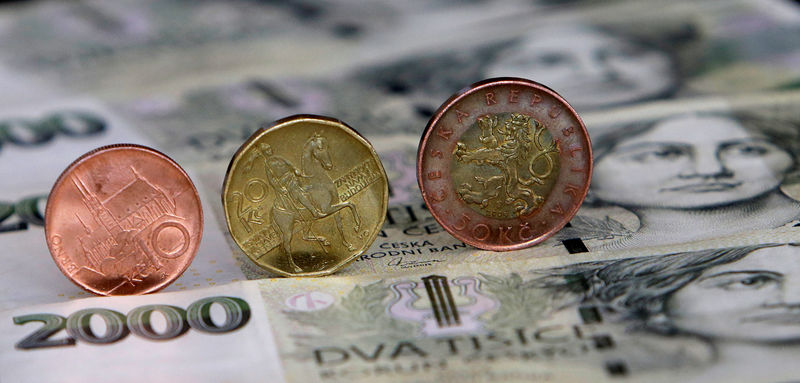By Sandor Peto
(Reuters) - The Czech central bank's anti-inflationary policy is likely to strengthen the crown next year, helping it outperform regional peers, a Reuters poll of 37 analysts showed on Thursday.
The crown (EURCZK=) is seen gradually gaining 3.1 percent against the euro in the next 12 months relative to Tuesday's 25.9 close, to 25.13, according to the Nov 30-Dec 4 survey.
Hungary's forint (EURHUF=) is seen strengthening 1 percent to 320.5. The zloty
The outlook is blurred by an array of factors, including uncertainty over the dollar's (DXY) appeal, domestic and European politics, and inflation trends.
Dollar buying this year has knocked most regional currencies below forecasts, but the crown enjoys support from predictable monetary tightening by the region's most hawkish central bank, analysts said.
The Czech central bank is widely expected to keep its main rate
But the weaker the crown, the more it will raise rates next year to push back inflation, which ran at 2.2 percent in annual terms in October, above the bank's 2 percent target, analysts said.
With continuing risks in global markets, the crown could stay weaker early next year as the bank expects, Commerzbank (DE:CBKG) analysts said in their December "Strategic Currency Briefing" note.
"(That) is why we also assume two further interest rate hikes of 25 basis points each in the first half of 2019," they said.
UBS included Czech crown buying against South Africa's rand in its top trade recommendations for 2019, saying in a note a potential rise in interest in the region's main currencies due to a likely stronger euro could also help the Czech unit.
Trading near 26 against the euro, the crown is almost 4 percent weaker than a Reuters poll predicted a year ago. The forint is weaker by 5 percent and the zloty by about 3 percent.
Serbia's economic performance and the region's highest interest rates helped the dinar (EURRSD=) outperform forecasts by 2 percent.
A key surprise this year, which also knocked regional equities below expectations, was buying of the dollar in global markets, coupled with the selling of emerging-market assets, partly due to rising U.S. interest rates.
Looking forward, that remains a risk, even though the Federal Reserve has recently signaled its rates may be close to neutral levels.
An expected start of rate hikes by the European Central Bank next autumn could also help currencies in the region, nudging Polish and Hungarian rate setters toward increasing their record-low central bank rates, analysts said.
However, Europe faces political risks, including uncertainty over whether Britain quits the European Union with or without a deal.
"In the coming days/weeks sterling may set the tone for the CEE currencies with the Polish zloty used as a proxy," Rabobank said in a Dec. 4 note.
Poland has the tightest trade links in the region with Britain, while the impacts of Brexit will be watched in the car manufacturing sector, a key output in Central Europe.
Poland will also hold parliamentary elections next year, which may influence monetary policy if the government subsidizes rising energy prices or increases spending, analysts said.
European Parliament elections in May might also increase existing tensions between the region's eastern members, mainly Poland and Hungary, and western members including Germany and France, analysts said.
"(Also) China may face a surge in U.S. tariffs, and a deeply split U.S. Congress is heading toward debt ceiling negotiations, to name but a few risks," Nordea said in a Dec. 4 note.
